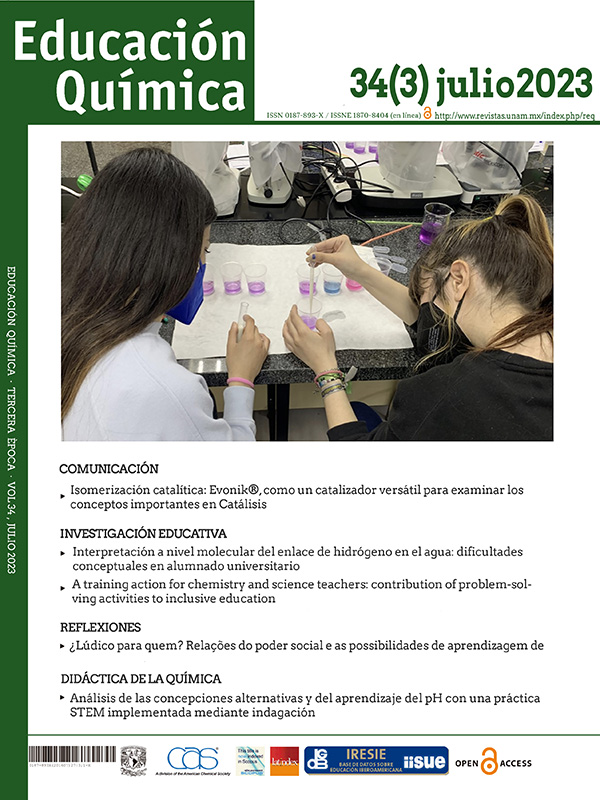Molecular interpretation of the hydrogen bonding in the water: Conceptual difficulties by university students
Main Article Content
Abstract
The relevance of the consideration of alternative ideas or conceptions, and their consequence on students' misconceptions, is introduced. Then, the results of a research on their understanding of hydrogen bonding, at the atomic-molecular level, in liquid water are explained. To this end, the responses of first-year students in the Bachelor's Degree in Chemical Engineering and the Master's Degree in Teacher Training are analysed, when they were asked to describe it, with the help of a drawing or diagram, based on their knowledge acquired in previous years. No significant differences were found between students of the aforementioned degrees or in the three academic years during which the study was carried out. Forty-eight percent were able to reason the question acceptably, and the rest found alternative conceptions involving aspects such as: considering attractions between hydrogen atoms of different H2O molecules; understanding that it refers to the covalent O-H bonds of each H2O molecule; interpreting that each H atom is joined by covalent bonds to two O atoms of each H2O molecule; and considering extravagant or 'naive' molecular shapes, among others. Finally, it is outlined how this information is useful for educational practice and, especially, for the pedagogical content knowledge.
Article Details
Citas en Dimensions Service

Educación Química por Universidad Nacional Autónoma de México se distribuye bajo una Licencia Creative Commons Atribución-NoComercial-SinDerivar 4.0 Internacional.
Basada en una obra en http://www.revistas.unam.mx/index.php/req.




